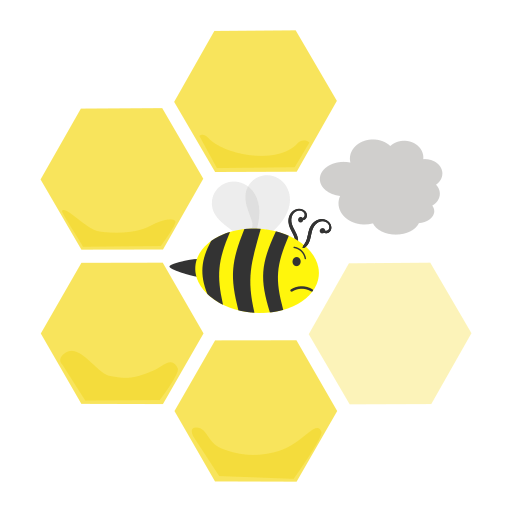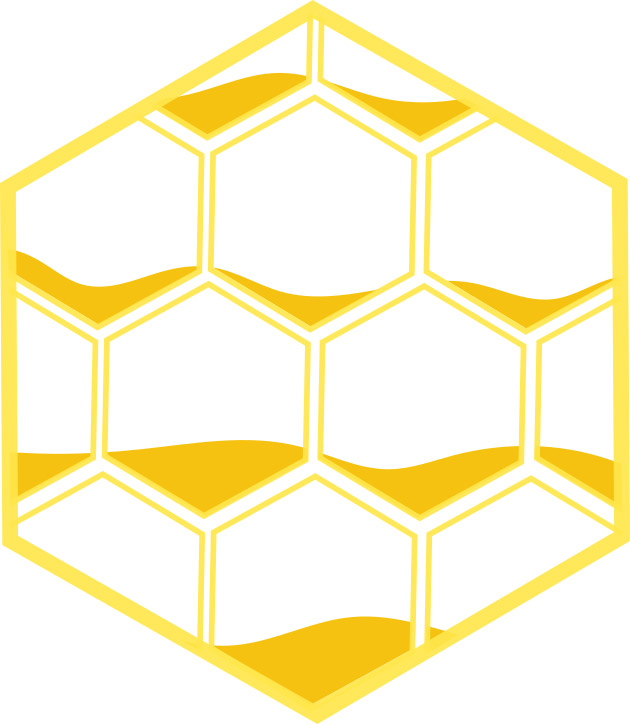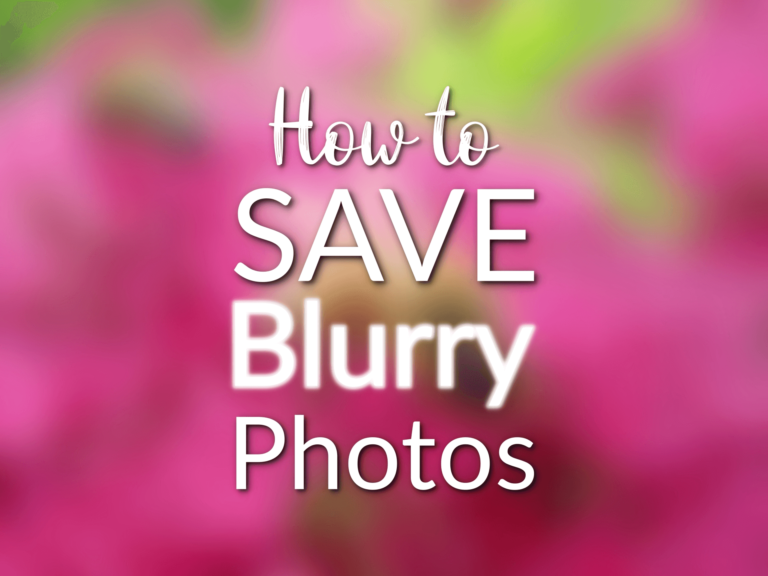Cranky Bee’s tips will help you build and maintain a great relationship with the bees in your backyard and garden. I’ve discovered, despite her perpetual mood, that she is surprisingly wise. I hope you find something in the article (and on the infographic) that helps you.
~ Christelinda
Please note, when you purchase a product through the links below, we may receive an affiliate commission (at no additional cost to you) which helps to support this project. Thank you!
Cranky Bee here! Before we get started, please note that I had nothing to do with this cheerful yellow-and-purple colour scheme. It was all Christelinda’s idea. I am not fond of yellow and purple.
Okay, I know that you people have good intentions, planting flowers for us bees and all. But still – some of the stuff that you do really rumples up my wings! I mean, I get cranky with humans all the time, but even some of my happy siblings have had unpleasant interactions with humans. I want to fix this. My human approached this sensitive topic gracefully – researching, reading articles, and interviewing me. Here are the results.
What causes cranky bees?
Below are my top 6 tips for you about why bees might get cranky.
Weather
When the weather gets hot and sticky, humans get sweaty, stinky and cranky. Bees are no exception. Except for maybe the stinky part.
Do you know the feeling of discovering a jug full of sour milk on a hot day? Picture the same thing happening with your entire honey supply.
Now you know why we’re cranky. Lots of humans, animals and bees grumble when the snow starts falling – it means cold feet and a dwindling food supply. For us bees, it means that we need to work harder than ever to protect our precious honey supply.
Fast Movement
I’m small and you’re big. I could easily get squished, and I don’t want that. It would really ruin my day.
Flailing arms and fast movements make me launch into attack mode. And while we’re on this topic, please, try to keep your little humans under control. Children remind me of my irritatingly happy siblings. They’re always zooming around, giggling their heads off, busy doing something. I don’t get your kid’s obsession with pulling flower heads off and sticking them in their hair. Fast movements irritate me, and so do lost flowers.
Yes, my human broke all those rules and more when she was a little tyke. But she’s grown up now and knows better.
Bananas! Yes Bananas
We use lots of pheromones to communicate with each other, as we don’t have vocal cords.
When you come outside with a banana, or banana breath, we can smell it. Specifically, isoamyl acetate, an active component of one of our alarm pheromones.
Do you see what I’m getting at?
Nectar Shortage
We get hangry, too.
And, sometimes bees from surrounding areas are also short on food. When this happens, sometimes they will come over and try to rob our hive, or sometimes we do the robbing!
The result is that we’re very territorial and aggressive.
Perfumes
What’s with the perfumes, people?
You might think that it makes you smell nice. But, we bees don’t like it. It interferes with our pheromones and sometimes leads to embarrassing incidents in which we mistake you for a flower.
Overcrowding
Hot weather and not enough room is a recipe for a hive full of cranky bees. There’s nothing you can do about this, unfortunately. Just know that it may be another reason why we’re cranky.
Cranky Bee’s Tips to Prevent Bee Stings
No one likes them, and yet, they happen. Most stings happen because of being in the wrong place at the wrong time. This applies to most stinging insects (like the time that my human slid down a slide, and there was actually a hornet’s nest at the bottom! Ouch!).
Want to know how you can reduce your chances of getting stung?
Here are 4 easy tips that every gardener should know:
- Remember that bees won’t attack unless they feel threatened. We’re not bad bugs at heart. We don’t want to sting you, because it means that we’ll die. Without getting too much into the gory details, when a bee stinger goes into human flesh, it gets stuck there. The bee pulls away, leaving part of its abdomen behind. I’ll let you think about this.
- No flapping. The temptation to run away, screeching and flapping is enormous. But please, don’t do it. We just want to get away. As for swatting, please stop. It’s very rude.
- Avoid scented products. I grouched about this before. See above if you forgot already.
- Try not to wear dark clothing, okay? It makes you hot, sweaty and stinky (but again, please no scented deodorant). Big, lumbering dark things activate my attack instincts. Why? My eyesight isn’t that great, and when you’re wearing dark clothing you kind of look like a bear, skunk, or some other nasty predator. “But I’m not a bear!”, you protest. But we’re not willing to take any chances. Also, did I mention my bad eyesight?
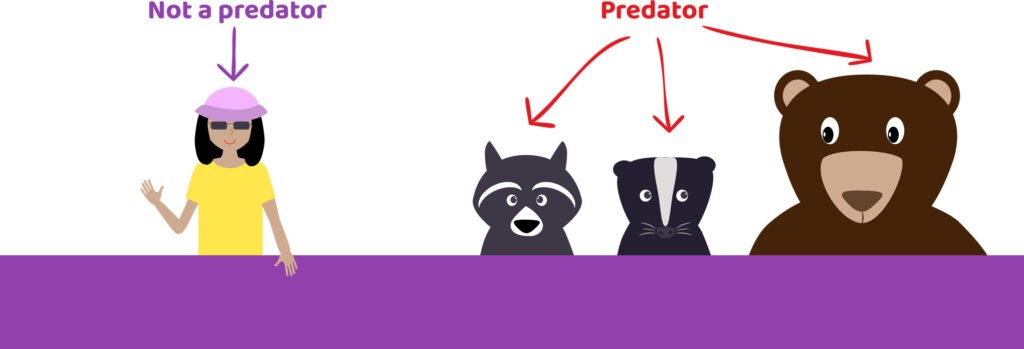
Bee Stings – What to Do If It Happens
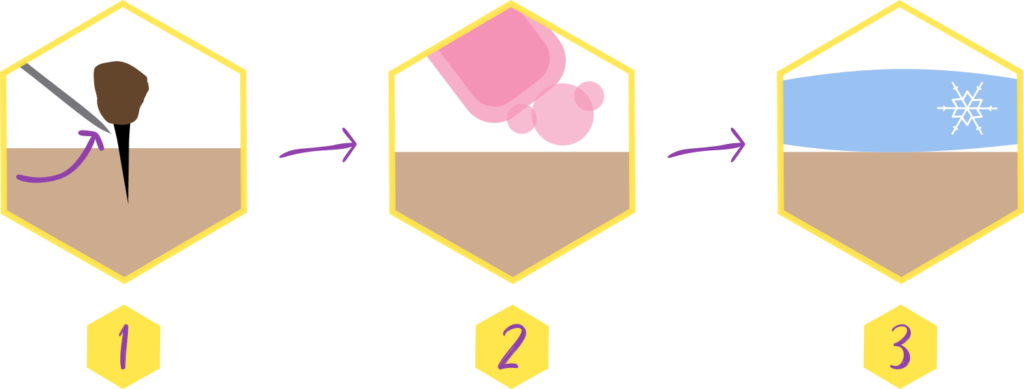
I’m a bee, not a doctor, so I can’t give specific first-aid advice.
But some common-sense things apply:
- Remove the stinger as quickly as possible – ideally, use a credit card or fingernail to flick it up.
- Then, wash the area with soap and water.
- To help with swelling, apply a cold compress.
And please, if anything out of the ordinary starts happening, such as difficulty breathing, swelling, or nausea, get yourself into the hospital as soon as possible. Some people can get surprise allergic reactions to bee stings, and they can be very dangerous.
That’s a Wrap!
Cranky Bee’s tips are good advice! And as promised here is our full infographic, in all of its purple and yellow glory. Because we’re responsible, mature researchers, we’ve also included our references here and at the bottom of the infographic in case you want to do your own research.
Do you have any cranky bee stories that you’d like to share or additional tips for fellow gardeners? We’d love to hear them.
References:
